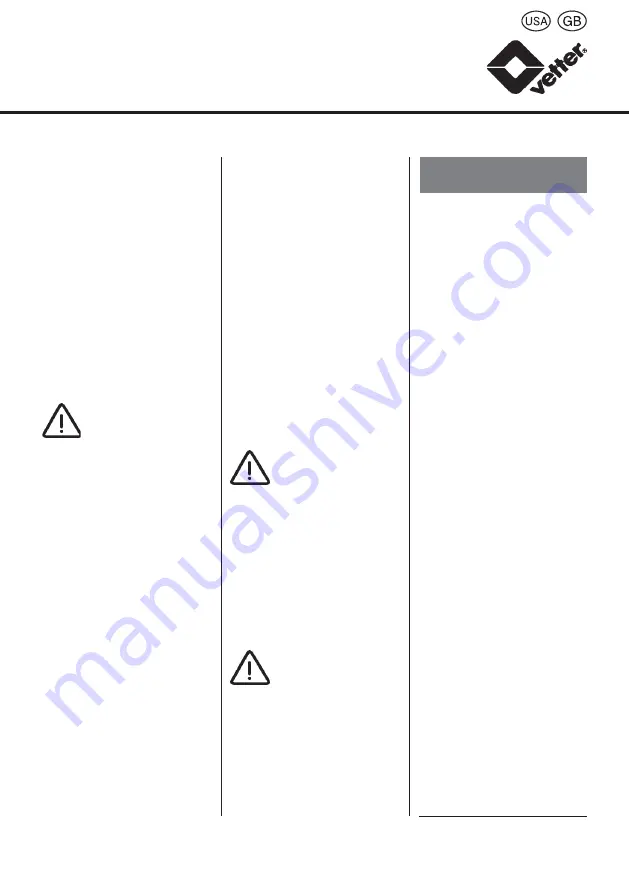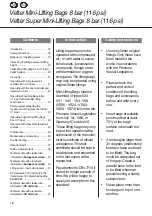
•
Lifting bags can be
used without problems
at temperatures of
- 20°C (- 4°F)
(max. - 40°C (- 40°F))
and temporarily up to
+ 115°C (+ 239°F).
•
Protect bags against
flying sparks during
welding and cutting
work.
•
Do not place extra loads
on bags, e.g. hydraulic
props, winches, falling
loads.
Warning
Never work under
suspended loads,
never reach under
load. Keep your
distance.
•
Avoid shearing stresses
by squeezing the bag
when the load is
lowered.
Warning
Never stand in
front of the bag,
always to one side
when in use since
it can be catapult-
ed out from under
the load.
19
•
Secure load against
slipping. Keep inserting
props the higher the
lifting height.
•
If a substructure is used
always ensure that this
is stable and firm. The
substructure must
support at least the
complete area of the
bag and should be
wider and longer than it
is high.
Risk of slipping
Never place metal
on metal when
propping up
loads!
•
Place stones, branches
or similar materials
under the bag to
improve adherence if
used on slippery
surfaces (ice, snow,
mud, etc.).
•
Avoid spot loads, e.g.
building cramps, bolts.
•
Never use bags on
sharp edges or on very
hot days. Use suitable
liners and cover the
complete surface of the
bag.
Behaviour of the
lifting power
The Vetter Mini-Lifting Bags
8 bar (116 psi) operate
according to the physical
principle of pressure x area
= power
Since the effective contact
area is reduced with an
increasing lift due to the
surface curvature, the lifting
power also decreases with
a higher lifting height.
If only an air pressure of
below 8 bar (116 psi) is
available, the lifting power
can be roughly calculated
as follows:
Lifting power from load path
diagram
1
divided by 8 (bar),
multiplied by air pressure
(bar) available.
Lifting power divided by
8 bar x (y) bar.
Wherever possible you
should determine the
weight of the load and how
far the load has to be
moved (lifting height) before
starting work.
1
compare page 31



































